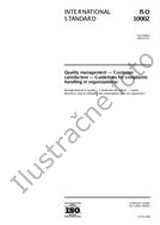Potrebujeme váš súhlas na využitie jednotlivých dát, aby sa vám okrem iného mohli ukazovať informácie týkajúce sa vašich záujmov. Súhlas udelíte kliknutím na tlačidlo „OK“.

ISO/IEC 18000-6-ed.3.0
Information technology - Radio frequency identification for item management - Part 6: Parameters for air interface communications at 860 MHz to 960 MHz General
NORMA vydaná dňa 16.1.2013
| Dostupnosť | Vypredané |
| Cena | NAOTÁZKU bez DPH |
| NA OTÁZKU |
Informácie o norme:
Označenie normy: ISO/IEC 18000-6-ed.3.0
Dátum vydania normy: 16.1.2013
Kód tovaru: NS-941671
Počet strán: 9
Približná hmotnosť: 27 g (0.06 libier)
Krajina: Medzinárodná technická norma
Kategórie - podobné normy:
Anotácia textu normy ISO/IEC 18000-6-ed.3.0 :
ISO/IEC 18000-6:2013 defines the air interface for radio frequency identification (RFID) devices operating in the 860 MHz to 960 MHz Industrial, Scientific, and Medical (ISM) band used in item management applications. It provides a common technical specification for RFID devices that can be used by ISO committees developing RFID application standards. It is intended to allow for compatibility and to encourage inter-operability of products for the growing RFID market in the international marketplace. It defines the forward and return link parameters for technical attributes including, but not limited to, operating frequency, operating channel accuracy, occupied channel bandwidth, maximum effective isotropic radiated power (EIRP), spurious emissions, modulation, duty cycle, data coding, bit rate, bit rate accuracy, bit transmission order, and, where appropriate, operating channels, frequency hop rate, hop sequence, spreading sequence, and chip rate. It further defines the communications protocol used in the air interface. ISO/IEC 18000-6:2013 together with ISO/IEC 18000-61, ISO/IEC 18000-62, ISO/IEC 18000-63 and ISO/IEC 18000-64 specifies the physical and logical requirements for a passive-backscatter, Interrogator-Talks-First (ITF) or tag-only-talks-after-listening (TOTAL) RFID system. The system comprises Interrogators, also known as readers, and tags, also known as labels. An Interrogator receives information from a tag by transmitting a continuous-wave (CW) RF signal to the tag; the tag responds by modulating the reflection coefficient of its antenna, thereby backscattering an information signal to the Interrogator. The system is ITF, meaning that a tag modulates its antenna reflection coefficient with an information signal only after being directed to do so by an Interrogator, or TOTAL, meaning that a tag modulates its antenna reflection coefficient with an information signal upon entering an Interrogators field after first listening for Interrogator modulation in order to determine if the system is ITF or not. ISO/IEC 18000-6:2013 contains one mode with four types. The detailed technical differences between the four types are shown in the associated parameter tables. Types A, B and C are ITF. Type A uses Pulse-Interval Encoding (PIE) in the forward link and an adaptive ALOHA collision-arbitration algorithm. Type B uses Manchester in the forward link and an adaptive binary-tree collision-arbitration algorithm. Type C uses PIE in the forward link and a random slotted collision-arbitration algorithm. Type D is TOTAL based on Pulse Position Encoding or Miller M=2 encoded subcarrier.



 Cookies
Cookies
